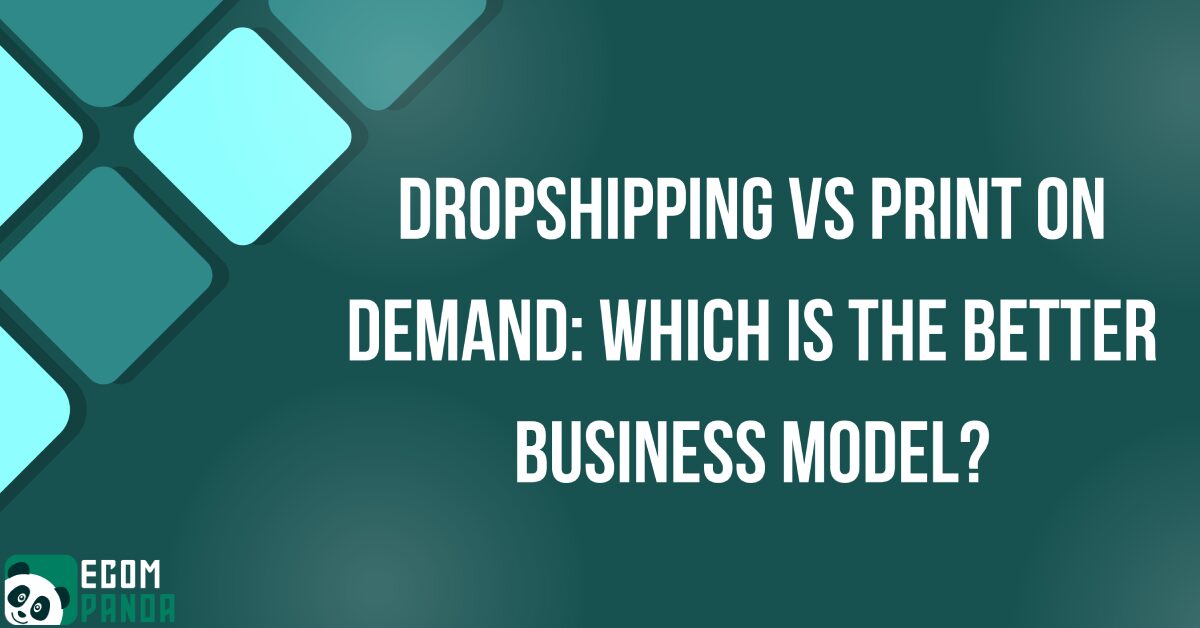Introduction
E-commerce has revolutionized the way business is conducted, transforming the retail landscape and introducing a myriad of opportunities for aspiring entrepreneurs. In the vast expanse of e-commerce business models, two have gained considerable traction in recent years – dropshipping and print on demand. Both present unique avenues for business, offering an array of advantages that make them appealing options.
Dropshipping and print on demand represent contemporary shifts in e-commerce dynamics, allowing entrepreneurs to enter the market with relatively low risk and investment. Yet, the question remains – dropshipping vs print on demand, which is the better business model? As these two models continue to redefine the e-commerce landscape, it’s essential to understand how they operate, their differences, their potential benefits, and drawbacks.
The purpose of this article is to delve into the intricate details of both business models, examining them through various lenses such as profit margins, inventory management, product quality, scalability, and ease of startup. We’ll explore real-world case studies to understand the potential for success and failure in dropshipping vs print on demand. Ultimately, the goal is to equip you, the reader, with enough knowledge to make an informed decision about which business model aligns best with your entrepreneurial aspirations and capabilities. Join us as we embark on this in-depth comparative journey of dropshipping vs print on demand.

Understanding Dropshipping
Dropshipping is an e-commerce business model where the store owner doesn’t keep the products they’re selling in stock. Instead, when a store sells a product, it purchases the item from a third party—usually a wholesaler or manufacturer—and has it shipped directly to the customer. In other words, the merchant never sees or handles the product.
Here’s how it works: The store owner begins by setting up an online store and forming agreements with suppliers who are willing to dropship on their behalf. Once a customer places an order for a product, the store owner forwards the customer’s order details to the supplier. The supplier then fulfills the order by packaging and shipping the product directly to the customer. The store owner’s profit is the difference between the wholesale price paid to the supplier and the retail price charged to the customer.
There are several key benefits of dropshipping, which have contributed to its popularity. Firstly, dropshipping requires relatively low startup costs as there’s no need to invest in inventory or a physical storefront. It’s also easy to set up and manage, making it an ideal option for newbie entrepreneurs. Moreover, with the right supplier, you can offer a wide array of products.
However, dropshipping is not without its drawbacks. Since you rely on suppliers to fulfill orders, you have little control over product quality, stock levels, and shipping times, all of which can affect customer satisfaction. Profit margins can also be slim in comparison to other e-commerce business models due to heavy competition and reliance on high-volume sales. Understanding these pros and cons is essential when considering dropshipping vs print on demand for your e-commerce venture.
Understanding Print on Demand
Print on Demand, often abbreviated as POD, is another popular e-commerce business model, particularly for creative entrepreneurs. It allows you to sell custom-designed products, such as t-shirts, mugs, posters, and books, without holding any inventory or making an upfront investment in stock.
Here’s the process: Firstly, you create and upload your custom designs onto products offered by your chosen Print on Demand service. These products are then showcased in your online store. When a customer purchases a product, the order is sent to the Print on Demand service, which prints your design onto the product and ships it directly to your customer. You are charged for the production cost, and your profit is the retail price minus these production costs.
Print on Demand comes with its own set of benefits. One significant advantage is the creative control it provides; you get to create your own unique product designs, making it a great option for artists, designers, and brands. Like dropshipping, it requires low initial investment as there’s no need for inventory. Plus, you can offer a wide variety of products without worrying about unsold stock.
However, the Print on Demand model also has its challenges. The cost of printing can sometimes be high, reducing your profit margin per product. While you have control over design, you still lack control over the production and shipping process, which can impact customer satisfaction. Quality can vary depending on the POD service you choose, and shipping times can also be longer than traditional retail models.
As we continue our exploration of dropshipping vs print on demand, keep these benefits and drawbacks in mind. Your choice between the two will largely depend on your business goals, your skills, and your personal preferences.
Dropshipping vs Print on Demand: Profit Margins
When examining dropshipping vs print on demand, profit margins emerge as a crucial consideration. The margin you can expect to make is often the decisive factor in choosing between these two models.
In dropshipping, profit margins can vary widely, typically ranging between 15% and 45%, depending on the industry and product. High-ticket items often offer better margins. However, the lower price range products often have to be sold in high volumes to earn significant profits. It’s also important to note that competition can be fierce in dropshipping, which can put a downward pressure on prices and, consequently, margins.
On the other hand, Print on Demand also provides variable profit margins, depending largely on your pricing strategy and the cost of the chosen POD service. While the cost of production can sometimes be high, POD allows you to set your retail price, which can lead to higher profit margins—especially for unique, high-quality designs that customers are willing to pay a premium for. The margins typically range from 20% to 60%.
The factors that influence profit margins in both models include volume, pricing, and product types. High-volume sales are often necessary in dropshipping to achieve substantial profits due to the generally lower price points. In contrast, Print on Demand can yield profitable returns with fewer sales if the designs are unique and priced appropriately.
Product types also play a significant role. Some products have naturally higher margins in dropshipping, while in POD, products that allow for higher quality prints and unique designs can fetch better prices.
When comparing dropshipping vs print on demand, it’s vital to analyze your prospective profit margins carefully, factoring in the specific product niche, competition, and your capacity to drive volume or deliver unique designs.
Dropshipping vs Print on Demand: Inventory Management
Inventory management is a critical aspect of any e-commerce business, and it’s handled differently in dropshipping vs print on demand. Understanding these differences can help you make an informed decision about which model suits your business needs and capabilities.
In dropshipping, you don’t carry any inventory, but that doesn’t mean inventory management is non-existent. You need to maintain a constant line of communication with your suppliers to stay updated on their inventory levels. The last thing you want is to sell a product on your site that your supplier doesn’t have in stock. This situation, called a stockout, can lead to delays, cancellations, and disgruntled customers. Hence, efficient inventory management in dropshipping involves syncing your online store with your suppliers’ inventory to ensure accurate product availability.
Print on Demand operates differently. Since the products are only produced when an order is placed, you never have to worry about stockouts. This on-demand production approach eliminates the need for traditional inventory management. However, during peak seasons or promotional periods, it’s crucial to communicate with your POD service to ensure they can handle the increased demand.
Inventory mismanagement can pose significant risks in both models. In dropshipping, if your suppliers run out of stock, you may lose sales and even customers if they have a negative experience. On the other hand, while Print on Demand eliminates the risk of stockouts, failure to plan for increased demand during peak periods can lead to slower production times, delayed shipments, and dissatisfied customers.
In the debate of dropshipping vs print on demand, inventory management becomes less about handling physical products and more about managing supplier relationships and customer expectations. Your ability to effectively navigate these factors will play a significant role in your business’s success.
Dropshipping vs Print on Demand: Product Quality and Branding
When contrasting dropshipping vs print on demand, product quality and branding emerge as significant differentiators. Both can greatly influence customer satisfaction and the overall reputation of your business.
In dropshipping, the level of control over product quality is somewhat limited as the products are sourced from third-party suppliers. You rely on these suppliers to maintain high-quality standards. While you can select suppliers with stellar reputations, there’s still an inherent risk, and quality issues can arise. Any quality issues can impact your brand negatively as customers associate the product quality with your store, not the supplier.
On the other hand, print on demand gives you greater control over the product’s final appearance as you’re responsible for the design. However, the actual quality of the printed product and the base product (like the t-shirt or mug material) depends on the POD service you choose. It’s crucial to choose a reliable service with consistent, high-quality print results to ensure your customers are satisfied and your designs look their best.
Branding plays an integral role in both business models. In dropshipping, although products come from various suppliers, they’re sold under your store’s brand. It’s crucial to choose products that align with your brand image and values. You can also enhance branding by customizing your online store, packaging, and customer service.
Print on demand takes branding a step further. Since you’re selling your unique designs, your products themselves become an extension of your brand. This allows for a more personalized and distinctive brand experience, which can lead to increased customer loyalty.
In the dropshipping vs print on demand debate, the choice between the two will hinge on your desired level of control over product quality and the importance of having products that are an inherent representation of your brand. Both models offer ample opportunities for successful branding, albeit in different ways.
Dropshipping vs Print on Demand: Scalability and Growth Potential
Scalability and growth potential are pivotal considerations when comparing dropshipping vs print on demand. Understanding the inherent growth opportunities and limitations of each model can guide your choice based on your long-term business aspirations.
Dropshipping is highly scalable. Since you don’t need to handle inventory or shipping logistics, you can theoretically add as many products to your online store as you like, provided your suppliers have them in stock. This ability to expand your product offerings without increasing operational complexity provides significant growth potential. However, maintaining the quality and consistency of a larger product range can be challenging, and increased competition in dropshipping can also limit growth potential.
In contrast, print on demand has different scalability considerations. The addition of new products is typically contingent on creating new designs, which can be time-consuming. However, once a design is popular, it can be easily scaled by applying it to different products or selling it to a broader market. The unique, branded nature of POD products can also command higher prices, contributing to growth potential. However, scalability in POD is often dependent on the capacity and reliability of your POD service provider.
In terms of growth potential, both dropshipping and print on demand offer opportunities for expansion into new markets, product niches, and customer segments. The scalability of your e-commerce business in either model will largely depend on your strategic planning, marketing efforts, and the robustness of your supply chain or POD service.
When weighing dropshipping vs print on demand, consider your growth ambitions, the amount of time you can commit, and your comfort level with the challenges associated with each model’s scalability. Your final choice should align with both your immediate needs and your future business goals.
Dropshipping vs Print on Demand: Ease of Startup
The process of setting up a new business can be daunting, and the startup procedure varies when comparing dropshipping vs print on demand. Both models are accessible for beginners but come with their unique considerations.
Starting a dropshipping business requires setting up an online store, identifying and establishing relationships with reliable suppliers, and selecting products to sell. It’s important to conduct thorough market research to identify profitable niches and ensure that your chosen products have sufficient demand. While the upfront costs are relatively low, there can be ongoing costs related to website maintenance, marketing, and potential membership fees for dropshipping supplier directories.
Conversely, starting a print on demand business involves choosing a reliable POD service, setting up an online store, and creating or sourcing designs for your products. It’s critical to ensure that your designs are high quality and appeal to your target market. Unlike dropshipping, POD often requires an investment of time or resources into creating unique, compelling designs. However, it doesn’t typically involve ongoing supplier fees.
Factors to consider when starting a dropshipping or print on demand business include your budget, your expertise in the product niche, your design skills (for POD), and your ability to market your products effectively. Each business model has its learning curve, so be prepared to invest time in understanding the intricacies of whichever model you choose.
In the debate between dropshipping vs print on demand, the ease of startup for both models is relatively equal, but the challenges differ. The choice depends on your resources, skills, and the kind of products you’re passionate about selling. The key is to choose a model that aligns with your business vision and strengths.
Case Studies: Success and Failure in Dropshipping vs Print on Demand
Examining real-world examples can provide valuable insights when comparing dropshipping vs print on demand. Below are success and failure stories in both business models, offering lessons for budding entrepreneurs.
Success in Dropshipping : An example of a successful dropshipping business is Irwin Dominguez from San Diego, who managed to hit the million-dollar mark in sales within eight months of starting his online store. His strategy was built around identifying a profitable niche (household goods and lifestyle products), rigorous testing and analysis, and leveraging social media advertising to drive traffic to his store. The key lesson here is the importance of strategic planning, constant evaluation, and effective marketing when pursuing dropshipping.
Failure in Dropshipping : Contrarily, an example of an unsuccessful dropshipping venture might involve a business owner who entered a highly competitive niche without proper market research, resulting in very low profit margins. They might have also chosen unreliable suppliers, leading to stockouts and late deliveries, which damaged their reputation and customer relationships. This example underscores the importance of comprehensive market research, product selection, and supplier reliability in dropshipping.
Success in Print on Demand : Teespring user “Pug Life” stands out as a success story in the print on demand space. The store, which sells products featuring Pug-themed designs, leverages the strong community of pug lovers and owners. With unique, high-quality designs, the business turned their passion into a profitable online store. This case study emphasizes the value of niche marketing, community building, and creative designs in a successful POD business.
Failure in Print on Demand : Conversely, a failure in the POD world might involve an entrepreneur who ventured into this model without investing time or resources in creating quality designs. Their generic or poor-quality designs didn’t resonate with consumers, resulting in low sales. Additionally, they chose a low-quality POD service, leading to product and print quality issues that dissatisfied customers. This case highlights the importance of investing in design quality and selecting a reliable POD service.
In the context of dropshipping vs print on demand, these case studies emphasize the importance of identifying the right niche, creating high-quality products (whether sourced or designed), and understanding your customer base. Success in either model depends on careful planning, continuous learning, and an ability to adapt to market trends and customer preferences.
| Dropshipping | Print on Demand | |
|---|---|---|
| Startup Costs | Lower, mainly website setup and marketing | Lower to moderate, depending on whether you create designs yourself or hire a designer |
| Inventory Management | Not required. You only purchase products from suppliers after a customer has ordered | Not required. Products are printed and shipped on-demand |
| Product Range | Wide range, depending on the supplier | Limited to products that can be printed on, but the range of such products is continuously expanding |
| Product Quality Control | Limited control as quality depends on suppliers | More control as you choose the POD service and design quality |
| Brand Customization | Possible, but typically limited to website and packaging | High, as products feature your custom designs |
| Scalability | High, as you can add as many products as your suppliers can provide | Depends on design creation speed and the capacity of your POD service |
| Profit Margins | Can vary widely depending on product, competition, and supplier costs | Can be high if your designs are unique and popular, but depends on pricing and the cost of your POD service |
| Supplier Reliability | Crucial. Delays or issues can impact your reputation | Important. The quality of the printed product and service depend on your POD service |
| Skills Required | Market research, supplier negotiation, e-commerce platform use, digital marketing | Design skills or hiring a designer, e-commerce platform use, digital marketing |
Conclusion: Dropshipping vs Print on Demand – Which is the Better Business Model?
Choosing between dropshipping vs print on demand ultimately comes down to your personal goals, skills, and the resources at your disposal. Each model has its unique advantages and challenges, and your decision should be based on a careful evaluation of these factors.
Dropshipping can provide a wide range of product offerings without the need to manage inventory. It has considerable scalability and is relatively easy to start. However, the challenges include potential quality control issues, dependence on supplier reliability, and fierce competition.
Print on Demand, on the other hand, offers a high level of control over product quality and branding. It allows you to sell unique, customized products without worrying about inventory management. However, the need for unique, appealing designs can be time-consuming, and your success is largely dependent on the quality of your POD service.
Profit margins, inventory management, product quality and branding, scalability, ease of startup, and real-world examples of success and failure also play essential roles in determining which business model is a better fit for you. These factors are interrelated, and their importance varies based on your business strategy and goals.
In conclusion, neither dropshipping nor print on demand can be deemed universally ‘better’. The ‘better’ business model is one that fits your needs, aligns with your strengths, and helps you achieve your business objectives. By understanding the nuances of dropshipping vs print on demand, you’re well-equipped to make an informed decision and embark on your e-commerce journey.
Frequently Asked Questions
1. Is dropshipping better than print on demand?
Whether dropshipping is 'better' than print on demand depends on your specific business goals, skills, and resources. Dropshipping offers a wide range of products, doesn't require inventory management, and is easy to scale. However, it has potential quality control issues and relies on supplier reliability. Print on Demand, meanwhile, provides control over product quality and branding, but requires unique, appealing designs and depends on the quality of your POD service.
2. What is more profitable: dropshipping or print on demand?
The profitability of dropshipping vs print on demand can vary based on many factors such as the product niche, pricing strategy, marketing effectiveness, and competition. While dropshipping can offer high profit margins for low-competition, high-demand products, print on demand can be profitable if your designs are unique and resonate well with your target audience.
3. Is print on demand more profitable?
Print on demand can potentially be more profitable, especially if you can create unique and high-demand designs. Because these products are unique, you can often command higher prices. However, your profits will also depend on factors like the cost of your POD service, your pricing strategy, and marketing efforts.
4. Is dropshipping better than POD?
Neither dropshipping nor POD is inherently 'better'. Each model has its pros and cons, and the 'better' option depends on your business goals, your resources, and your skills. It's essential to thoroughly understand both models before making a decision.
5. What is easier: dropshipping or print on demand?
Ease of operation can depend on your skillset and resources. Dropshipping might be easier for those who prefer not to create their own product designs and who are skilled in researching and sourcing products. In contrast, print on demand might be easier for those with design skills or a unique product idea that can be turned into a design.
6. How successful are most dropshippers?
Success rates vary widely in dropshipping. While some dropshippers achieve significant profits and success, others might struggle due to competition, supplier issues, or lack of marketing skills. Success in dropshipping often comes down to thorough market research, strategic planning, and effective marketing.







